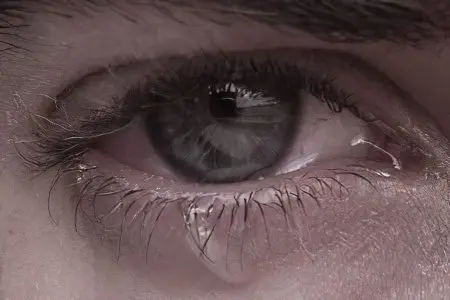Contents
People who do full-time welding work or just use this technology in home repairs know the expression “catching bunnies.” In the language of welders, this means getting an eye disease when working with welding equipment without goggles. Among doctors, such damage to the organ of vision is called “photokeratitis” or “electrophthalmia”. It occurs when the cornea of the eye is exposed to a powerful stream of ultraviolet radiation.
In order to understand the mechanism of its development and possible methods of prevention, it is necessary to dwell in more detail on the physical and physiological foundations of ultraviolet rays.
A bit of physics and technology

In most types of welding that are used in construction, the connection of products occurs under the action of a welding arc. The welding arc is an electric charge that occurs between two electrodes in a mixture of gases, which has high power and lasts for a long time. It has ultra-high temperature and high current density. The physical properties of the welding arc are such that when it is formed, an additional release of a large flux of ultraviolet radiation occurs.
Ultraviolet radiation is radiation with a wavelength of 10 to 400 nm. It occupies an intermediate position between visible light, whose wavelength exceeds 380 nm, and X-rays with a wavelength shorter than 10 nm.
Ultraviolet radiation is not uniform, it can be divided into four parts depending on the wavelength. Distinguish:
UV-A rays, or near ultraviolet, with waves of 315-400 nm;
UV-B rays, or 280-315 nm;
UV-C rays, or far ultraviolet, with waves of 100-280 nm;
extreme ultraviolet 10-100 nm.
The biological effect that ultraviolet radiation has on the human body directly depends on its wavelength. The longer they are, the weaker the influence is expressed.
UV-A rays are almost invisible to humans.
Ultraviolet rays with a length of 280-315 nm have a strong effect on the skin and mucous membranes and, with prolonged exposure, can cause burns.
The most aggressive are UV rays shorter than 280 nm, which can freely penetrate deep into the tissues of the body. For example, they can pass through all the media of the eye and reach the retina, causing damage to it.
The composition of ultraviolet radiation that occurs in the welding arc is dominated by UV rays with a wavelength of 100 to 300 nm.
A bit of medicine

The outside of the eye is covered with a special transparent structure called the cornea. It is a lens consisting of a transparent connective tissue, covered on the outside with an epithelium. Its cells are able to absorb ultraviolet radiation. The reaction of the cornea to UV rays depends on their wavelength, time and intensity of exposure. With prolonged exposure to a powerful stream of short-wave UV radiation, the DNA of epithelial cells is destroyed. As a result, their death develops, which manifests itself in the form of a burn.
In response to the action of UV rays, an inflammatory reaction occurs in the cornea, which is characterized by four classic symptoms:
edema;
redness;
an increase in body temperature;
pain.
These clinical signs develop due to the reaction of blood vessels, nerves, braiding the anterior surface of the eyeball.
Under the action of UV rays, small capillaries located at the junction of the cornea to the sclera expand, causing it to swell. The dilated, blood-filled vessels of the conjunctiva give it a red color.
The cornea is rich in nerve endings, so any damage to it causes severe pain.
Full recovery of its functions occurs in 3-4 days.
A distinctive feature of a burn with UV rays from thermal and chemical is that its effect is cumulative, that is, cumulative. Symptoms do not occur immediately after exposure, but appear gradually, reaching a maximum 6-12 hours after injury.
Signs of an eye burn from UV rays
The main complaints for eye burns by welding are:
Pain in the eyes;
feeling of sand, motes in the eye;
lacrimation;
eyelid spasm (blepharospasm);
photophobia;
decreased visual acuity;
headache;
increase in body temperature (not higher than 38 ° C)
When examining the eye, there is swelling of the cornea, it becomes looser, thickens, loses its natural luster, and may be clouded. In severe cases, erosion, bubbles form on its surface. The vessels of the conjunctiva are clearly visible, filled with blood – “red eyes”.
First aid

Any phototrauma of the eye requires a mandatory visit to an ophthalmologist to assess the degree of damage to the cornea.
To relieve symptoms at home before consulting a doctor, you can use:
sunglasses, blackout windows with curtains, use of nightlights;
painkillers and anti-inflammatory drugs inside;
preparations of natural tears.
The protective regime is of great importance precisely in the first day after the onset of symptoms, when photophobia and blepharospasm are most pronounced. Using sunglasses, avoiding bright lights, and darkening the windows with curtains will help your eyes get through this difficult period more easily.
It is not necessary to apply protective bandages over the eyes, as they slow down the healing process of the cornea and create additional discomfort for the victim.
Pain relievers such as Nurofen, Indomethacin, Nimesil, Diclofenac in tablets and capsules can be used to relieve pain. Apply 1 tablet (capsules) 2-3 times a day after meals for 3 days.
To accelerate the healing of epithelial damage and prevent dryness of the cornea, natural tear preparations can be used, for example, Vizin Pure Tear, Natural Tear. They are instilled 1-2 drops in each eye every 2 hours.
Do not:
instill any drops in the eyes, except for those written above, without first consulting a doctor;
use traditional medicine methods (tea lotions, honey solution, aloe) on the first day after injury;
rub your eyes.
Treatment prescribed by an eye doctor. After consultation, an ophthalmologist may prescribe:
antibiotics in the form of eye drops, this is necessary to prevent the development of microbial inflammation of the injured cornea;
solutions of anesthetics (lidocaine, dicaine), to relieve pain in the eyes;
perivasal novocaine blockades (performed in a polyclinic);
drugs that dilate the pupil.
Complications of corneal burns during welding. Delayed seeking medical help can cause the development of the following pathological changes in the cornea:
turbidity with the development of walleye;
scarring;
ulcers;
chronic inflammation.
Prevention
Since any disease and injury is easier to prevent than to treat, the main role in the prevention of electrophthalmia is played by compliance with safety regulations during welding.
A properly fitting welder’s mask will protect your eyes from the harmful ultraviolet radiation from the welding arc.










Si te veproj kam djalin qe ka qen aty afer kur saldohej dhe tani ka djegie dhe sikur ka rer ne sy cfar me sygjeron